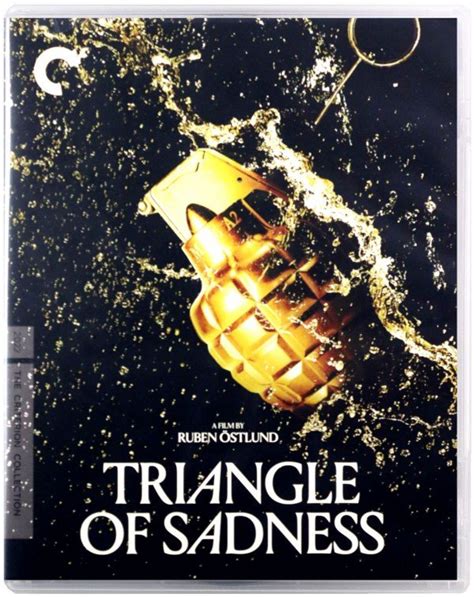Triangle of Sadness
directed by: Ruben Östlund, year: 2022
actors: Harris Dickinson, Charlbi Dean, Woody Harrelson, Dolly De Leon
actors: Harris Dickinson, Charlbi Dean, Woody Harrelson, Dolly De Leon

Description:
Triangle of Sadness is a razor-edged satirical drama-comedy about a fashion model couple and their entourage aboard a luxurious cruise. When money, status, and social polish fail under crisis, the group must confront who really wields power as class tensions erupt and hierarchies collapse. Östlund uses biting humor, awkward confrontation, and social satire to expose privilege and dependence, ending with a provocative, unsettling meditation on humanity and inequality.Keywords:
Social Climbing, Drama, Comedy, Satire, Black Comedy, Social Satire, Luxury Cruise, ClassHow disturbing is the Triangle of Sadness?
"Triangle of Sadness," directed by Ruben Östlund, is a satirical film that explores themes of class, privilege, and social dynamics through dark humor and uncomfortable scenarios. Its disturbing elements stem from graphic depictions of social hierarchies and human behavior, particularly during a luxury cruise that devolves into chaos. The film challenges viewers with its critique of capitalism and the absurdity of wealth, using shock and discomfort to provoke thought. Overall, it balances humor with unsettling moments, making it both poignant and provocative.
What is the main message of Triangle of Sadness?
"Triangle of Sadness," directed by Ruben Östlund, explores themes of class disparity, superficiality, and the absurdity of social hierarchies. The film satirizes the fashion industry and luxury lifestyle, highlighting how wealth and status can be both illusory and precarious. Through a luxury cruise gone awry, it reveals the fragility of social constructs and the underlying power dynamics among individuals. Ultimately, it prompts viewers to reflect on the nature of human relationships and the arbitrary values society places on appearance and wealth.
Is Triangle of Sadness worth watching?
"Triangle of Sadness," directed by Ruben Östlund, is a satirical drama that explores themes of wealth, class, and the absurdities of social dynamics. The film has received critical acclaim for its sharp humor, thought-provoking commentary, and strong performances. It won the Palme d'Or at Cannes 2022, which highlights its artistic merit. If you appreciate dark comedies with social critique and enjoy films that provoke discussion, "Triangle of Sadness" is definitely worth watching.
Why was Carl running at the end of Triangle of Sadness?
At the end of "Triangle of Sadness," Carl is seen running towards Yaya, who has been left on the beach after a series of events that highlight themes of power dynamics, survival, and societal roles. His running symbolizes a desperate attempt to reconnect and assert his feelings amidst the chaos that has unfolded. The film concludes with an ambiguous exploration of their relationship and the shifting hierarchies, leaving the audience to ponder the implications of their actions and the nature of their bond in a radically altered environment.
Explore More Categories: